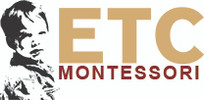
As mentioned in a previous article, we will take a closer look at the differences and uses between the Tree of Life and the kingdom system, and the idea of Domains. Before we begin, it is important that we get a brief understanding of what each system is, as well as what each item's purpose is.

A tree of life is a diagram that is usually used to represent the evolutionary relationships among all living organisms, based on the principle of common descent. It is constructed by comparing the characteristics (such as DNA sequences, morphology, etc.) of different organisms and inferring the evolutionary relationships among them. The tree is composed of branches that represent the different lineages of organisms, and the branching points (nodes) represent the points in evolutionary history where new lineages have diverged.

The five or six-kingdom classification system of organisms is a system of classification that groups organisms based on their characteristics and features, such as the mode of nutrition, cell structure and organization. The six kingdoms are Animalia, Plantae, Fungi, Protista, Eubacteria, and Archaebacteria. Now that we have had the opportunity to recap what the definition of each is, let’s look at the relationship between the two. It is often proposed that we drop one system in favor of the other. Yet, because so many of us have invested time, and effort into equipping our classrooms with the necessary materials, not to mention the efforts we have put into making sure that we can show the standards we are able to meet, we hesitate. Today, I am approaching this idea by asking the question, “Do we need to scrap one in favor of the other? Can the two work together?” It is possible! These models can and do work together. The five/six-kingdom systems allow you to infer to the idea of a common descent or that of an intelligent design, because it is focused on grouping organisms based on their characteristics rather than inferring the evolutionary relationships among them. The kingdom classification system groups organisms into categories based on their characteristics. in fact, we still use the kingdom model, or a hierarchical model as it is known, when we categorize a new organism. The tree of life, on the other hand, represents the evolutionary history of all living organisms. Think of the tree of life as showing the big picture, while the kingdom model is showing the most recent snapshot.

If we wanted to go one step further, I would advocate that you not only use these two models together, but that you implement the Domain system. The Domain system is based on the differences in the structure and function of cellular components, such as the presence or absence of a nucleus, and on genetic sequencing, therefore, making it even more relevant.
In summary, it is important we understand the purpose and the foundation of each of these classification systems and should use them as the need arises to show various points. The kingdom classification system groups organisms based on their characteristics and features, while the tree of life represents the evolutionary relationships among all living organisms by inferring the evolutionary history. So, instead of being moved to do away with your five or six kingdom charts and only embrace a Tree of Life model, consider using both, or all three, in such a way that will allow your children to gain a more rounded and deeper understanding of how we work with organisms and how we view life. Are we not trying to empower our children to take ownership of their knowledge? To explore, and reach their own conclusions?
Referenced material:
- Phylogenetic Tree of Life
- Cladistic Tree of Life
- The Gifts of the Phyla
- The five-kingdom Chart
- The six-kingdom Chart
- The Three Domains
- The Six-kingdom Classification System
Aki Margaritis is the Executive Director of ETC Montessori and holds teaching credentials for middle school and high school with advanced degrees in the areas of biology, math, and chemistry. He also holds a Montessori Secondary I credential from AMS.

